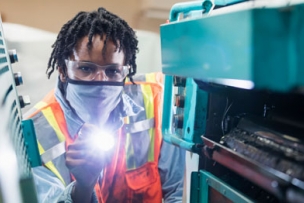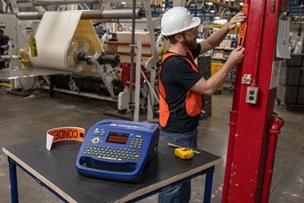The Occupational Safety and Health Administration (OSHA) reminds employers that they are responsible for the safety and health of workers and for providing them with a safe and healthful workplace.
It’s therefore vital to ensure your workers are protected with the appropriate AR/FR (arc-rated and flame-resistant) rain gear, which is designed to protect workers from electrical hazards such as arc flashes.
Read more: Is Your Facility Ready for Hurricane Season?
In order to help employers protect workers, OSHA provides two pages of information about the precautions that workers and employers should take before and after a hurricane has hit.
- The Preparedness page describes how to plan for a hurricane. The page also contains information about equipment, training and how to create evacuation plans and supply kits.
- The Response/Recovery page includes a link to OSHA’s Hurricane eMatrix, which is “designed to help employers make decisions to protect workers and offers recommendations for personal protective equipment, safe work practices, and precautions for each activity.” It describes the activities most commonly performed during hurricane response and recovery work and provides detailed information about the hazards associated with those activities.
NOAA also has a webpage designed to help employers and workers prepare for and respond to severe weather.
How Can I Protect My Workers?
Electrical safety is one of the most overlooked occupational hazards, with “control of hazardous energy (lockout/tagout)” ranking sixth on OSHA’s most recent list of its most-cited violations from the past financial year. It resulted in 1,599 total violations in 2020, clocking up $9,633,595 in penalties.
The potential risk from an electrical arc flash is always present for those who carry out electrical maintenance, or work near electrical equipment. Accidents can result in severe burns from heat and molten metal, often leading to serious injury.
Read more: Hurricanes: Cleanup, Disaster Recovery, PPE and Safety
When looking for AR/FR rainwear, clothing that merely complies with ASTM D6413, the standard test method for flame resistance of textiles, may not provide enough protection from an arc flash or flash fire. Rain gear that has been tested under the conditions that it is supposed to protect against is safest.
When it comes to selecting AR/FR rain gear for your workers, there are two ASTM standards to look out for:
- ASTM F1891, which prescribes fit, function and performance criteria for rainwear that meets a minimum level of thermal and physical performance when exposed to an electric arc or flame.
- ASTM F2733, which establishes applicable test methods, minimum physical and thermal performance criteria, a suggested sizing guide, and suggested purchasing information for rainwear for use by workers who are potentially exposed to industrial hydrocarbon fires or other petrochemical fire hazards.
It’s also worth noting that with hurricane season already underway, and supply chain challenges resulting from the COVID-19 pandemic ongoing, employers may face difficulties obtaining protective products. It therefore pays to plan ahead for each year’s hurricane season, which typically lasts from mid-May to November.
Read more: Severe Weather Preparedness for the Workplace
What Are the Dangers to Workers?
Workers who are engaged in cleanup activities following a hurricane may face safety risks that are more severe than the storm itself. One of the most significant risks is the threat from electrical hazards.
The National Institute for Occupational Safety and Health (NIOSH) has produced extensive guidance on how to prepare for possible electrical risks that may arise during hurricane cleanup work.
NIOSH notes that “electrical, overhead power lines, power junctions, and downed electrical wires and cables can cause electrocution and burns,” while “fallen lines can also energize other objects such as fences, ladders, or metal building parts.”
The use of improperly sized or operated portable generators during electrical outages can also lead to “backfeed” injuries to workers performing repair work in neighboring buildings, NIOSH adds.
The NIOSH guidance cautions that only trained electricians and utility workers should approach or handle electrical lines. All other response workers should avoid going near all downed lines and should treat them as if energized.
Electricians and utility workers who work with electrical lines should use electrically resistant PPE including head covers, gloves, boots and appropriate eye protection. Employers should provide training and practices to test, de-energize, isolate and/or lockout hazardous energy sources, NIOSH says.
For more information on electrical safety, see NIOSH’s electrical safety page.
What measures are you taking to protect your workers from hazards associated with hurricanes? Share your thoughts and insights in the comments below.





Talk to Us!
Leave a reply
Your email address will not be published. Required fields are marked *